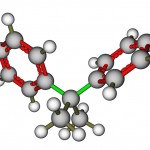
Many types of resin-based dental materials (dental composite restorations, dental sealants, and orthodontic adhesives) contain Bisphenol A (BPA) a synthetic chemical that is used to make a wide range of products. Leaching of BPA in to the mouth from restorations may occur because of incomplete polymerisation, bacterial, mechanical, thermal or salivary activity. BPA is an endocrine disrupting chemical and known xenoestrogen that can affect the reproductive, psychological cognitive, or endocrine-related health of children and adults. The extent of exposure to BPA from dental sources is unclear.
The main aim of the review was to assess urinary BPA (uBPA) exposure from dental treatment
Methods
Searches were conducted in the PubMed, Cochrane Central Register of Controlled Trials, Web of Science, Virtual Health Library, Science Direct, ClinicalTrials. gov and ProQuest databases. A single reviewer screened studies for inclusion with a 25% random sample being checked by a second reviewer. Studies conducted in humans undergoing dental treatment that measured urinary BPA were considered. Two reviewers independently assess risk of bias using a specifically tailored list of 12 criteria. The primary outcome was the direction and percentage change of uBPA between baseline and 24 h posttreatment and at later time points. A narrative summary of findings was presented.
Results
- 7 studies involving a total of 348 patients were included.
- 2 studies involved adults, 4 children and one adults and adolescents.
- All 7 studies measured uBPA before treatment and 24hrs post treatment.
- All 7 studies reported a substantial increase in mean uBPA concentrations 24 h after treatment, (ranging from 43% to 354%).
- The percentage increase varied for the different types of materials. Mean increase in uBPA concentrations 24 h after treatment; 43% and 51% for dental composite restorations, 30% and 113% for dental sealants, and 95% and 319% for orthodontic adhesives.
- One study to examine uBPA concentrations beyond 1 month post treatment found that concentrations returned to baseline by 14 d after treatment and remained at baseline 6 month after treatment.
Conclusions
The authors concluded: –
Our findings suggest that uBPA concentrations increase 24 h after dental treatment. One study showed that uBPA concentrations return to baseline by 14 d. Additional research is needed to determine the magnitude of change from pre- to post-dental treatment and the trajectory of uBPA concentrations posttreatment.
Comments
Given the widespread use of dental materials containing BPA and the concerns that that have been raised it is perhaps surprising that only a small number of studies involving a small sample of patients were identified. In particular the authors highlight a lack of data in relation to pregnant women. 5 of the included studies reported the use of BPA free containers for collection and storage of specimens and only 3 studies collected data about other potential sources of BPA. With use of dental composite restorations likely to increase with the phasing down of amalgam restorations there is a need for high quality research to look at BPA from dental materials in more detail.
Links
Primary Paper
Marzouk T, Sathyanarayana S, Kim AS, Seminario AL, McKinney CM. A Systematic Review of Exposure to Bisphenol A from Dental Treatment. JDR Clin Trans Res. 2019 Apr;4(2):106-115. doi: 10.1177/2380084418816079. Epub 2019 Jan 25. PubMed PMID:30931707.
Other references
Dental Elf – 10th May 2013
Bisphenol-A is released after placement of some dental pit and fissure sealants
